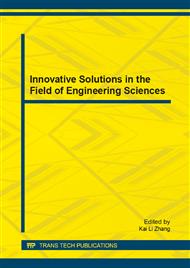p.284
p.289
p.294
p.299
p.307
p.312
p.316
p.321
p.326
Influence on Pitting Corrosion Behavior of Welded AISI30400 Plate in a Freeze-Thaw Environment
Abstract:
Welded structures which set up in outdoor in snow-and cold-prone areas are exposed to severe environment, in which liquids containing Cl-chloride ions from the sea breeze and snow melting agents undergo freeze-thaw cycles during the winter. Cl-solutions are known to produce pitting corrosion in austenitic stainless steel. However, the relationship between the freeze-thaw environment and pitting corrosion occurred in welded austenitic stainless steel has not yet been clarified. In the present study, the effect of the freeze-thaw environment on pitting corrosion in welded austenitic stainless steel submersed in Cl-solutions is investigated. AISI 304 (X5CrNi18-10 in ISO/TS 15510, SUS304 in JIS G 4305) samples with bead-on-plate welding are used as specimens. The thickness of the specimen is 4 mm. The specimens are fully immersed in FeCl3 solution. The freeze-thaw environment is created by temperature cycling from 20°C to-20°C. In the meanwhile, residual stresses due to the welding process in stainless steel structures can significantly affect behavior of pitting corrosion as same as influence of sensitization. Authors carried out the welding simulation as the purpose of predicting the welding-heat history and residual stress near the welding bead. As a result, large-scale pitting corrosion occurs primarily in areas of high tensile residual stress and sensitive metallographic structures near weld beads in the freeze-thaw environment. Accelerated pitting corrosion is confirmed to have occurred as a result of concentration cell corrosion due to the local concentration of Cl-chlorine ion around a weld bead during freezing and thawing of the solution. Furthermore, based on your study it became clear that the center position of large-scale pitting corrosion is in agreement with the simulation result rather than the stress peak position by X rays measurement.
Info:
Periodical:
Pages:
307-311
Citation:
Online since:
June 2014
Price:
Сopyright:
© 2014 Trans Tech Publications Ltd. All Rights Reserved
Share:
Citation:


